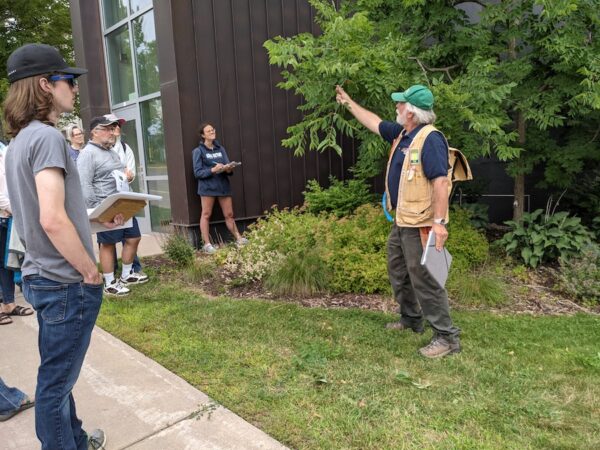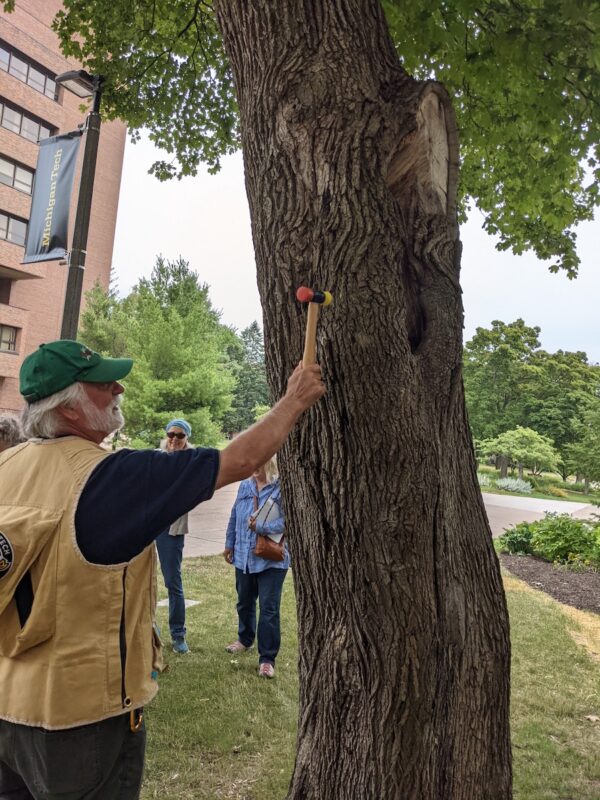RJ Laverne introduced Michigan Tech’s weirdest tree with an even weirder anecdote from ancient times.
The Kentucky coffee tree grows well almost everywhere, but it has a very limited range. Scientists think, says Laverne, that its seeds were once dispersed by seed pod–munching mastodons. Now, with no mastodons to spread it around, the occasional seed does sprout without benefit of the mastodon digestive processes, but not very often. As a result, Kentucky coffee trees are now relatively rare.
RJ Laverne is manager of education and training for The Davey Tree Expert Company, the largest residential tree management firm in the U.S. In addition, he is an adjunct associate professor in Michigan Tech’s College of Forest Resources and Environmental Science. He led about 30 attendees on a short tour of trees on Michigan Tech’s main campus Aug. 7, starting with a primer on tree identification.
The group strolled through center campus, with Laverne sharing little-known facts about each tree: Northern red oak owes its grain to the extra-large tubes that carry water up to the canopy in spring. You can identify sugar maple in winter by rubbing its bark, which actually hurts. Ginkgo fruits smell like dog droppings. Mountain ash is not an ash.
Laverne wound up the tour tapping on a tree with a rubber hammer. At one point, the dull whacks suddenly changed to a drum-like ring, a sign of rot. That doesn’t mean the tree is in imminent danger of falling over, he stressed. But if you were planning to harvest it for lumber, identifying the bad spots would give you a better idea of how many board feet the tree might yield.
Laverne’s visit was organized by the Keweenaw Wild Ones and the Keweenaw Garden Club.
RJ Laverne shares odd facts about the Kentucky coffee tree.
Tapping on the trunk, RJ Laverne quickly finds the bad spots within this sugar maple.


